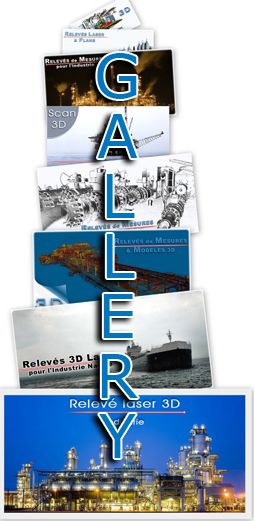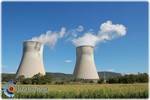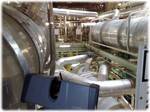

The content of this page needs an update version of your flash player :
3D scanning - an invention made for the nuclear sector
Since the early 1990s, laser scanning has been perceived as an obvious solution for the restriction of individual dosimetry, by the assignment of measuring functions in zones of ionizing radiation to an accurate and high-speed device with a facility for remote control.
This was one of the first major applications of this revolutionary technology.
In the interim, advances in speed of measurement and the ease of handling of scanners have proved to be competitive factors, whether for the surveying of turbine halls or the core of the nuclear building.
APPLICATIONS
- Kinematics for the movement of equipment in situ
- Conformity control of a new installation
- Creation of an equipment data bases
- Generation of a 3D model of a space, room or building
- Virtual 3D reconstruction for the simulation of a
maintenance or safety operation - Dismantling
- Clash detection between as-built condition and plan or project
- Feasibility analysis
- Generation of a plan view, section, elevation or isometric
- Replacement or installation of equipment
- Maintenance (piping, equipment, structure)
- 3D Dimensional survey and measurements
- Pipe connection on an existing system (tie-in), Tie-in
- Survey of piping systems, relevés de structures
- Dimensional surveys of a controlled zone
back to top of page
BENEFITS
- Generation of a 3D model of the existing structure in the required file format
(PDMS, PDS, Autocad, Microstation, 3DSMax, etc.) - Reduction of individual/collective dosimetry
- Team trained in HN1 & HN2, QSP, PR1-RN
- Expertise in 3D scans
- Optimization of unit shutdown
- 3D or 2D data files, obtained by the same survey campaign
- Long-term experience in the nuclear sector
- Appropriate equipment
- High precision of scans
- Speed of response
- Exhaustive scans
- Results suitable for processing in all CAD tools
- Rapid results, often available for processing within days of on-site scanning
- Tailored service
- Speed of capture of on-site measurements
back to top of page
END PRODUCTS
- Files types: Autocad (DXF/DWG), Microstation (DGN), Solidworks, 3DStudioMax (3ds & max),
3Dipsos (IPS), Realworks (RWP), Pointools (POD/PTL) , PDMS (macros), PDS
and of course all the open format files like IGES, OBJ, STEP, VRML etc... - 3D model
- Structured 3D model, with attached catalog
- High density point cloud, with a high level of detail
- 2 dimensional images (cut sections, layouts, …)
- 2 dimensional digitized file ( cut sections, layouts,…)
- Scan-review (Collaborative review of laser survey through panoramic images)
back to top of page
REFERENCES












